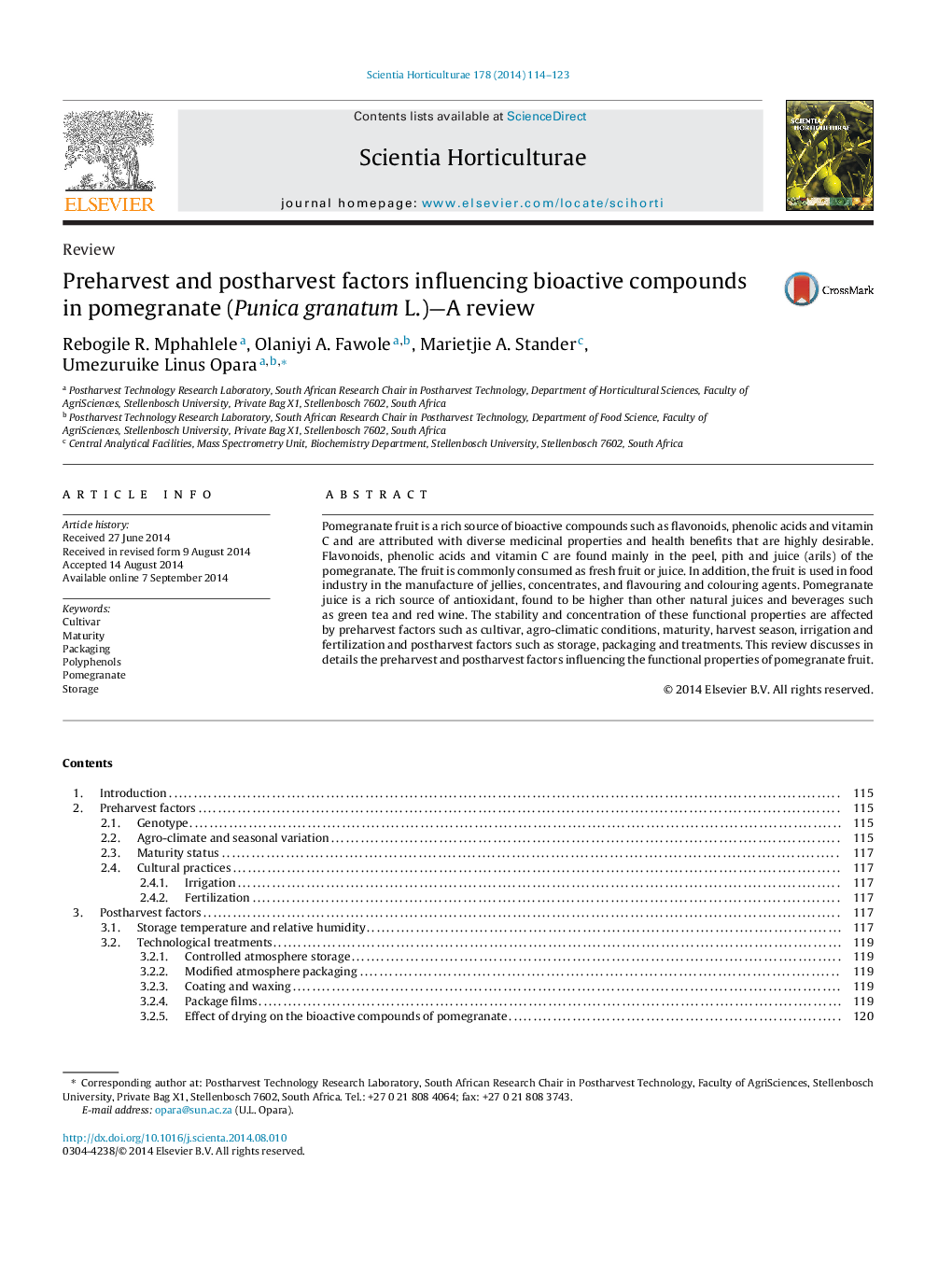| Article ID | Journal | Published Year | Pages | File Type |
|---|---|---|---|---|
| 4566568 | Scientia Horticulturae | 2014 | 10 Pages |
•Influence of genotype and maturity status on the bioactive compounds is presented.•Growing season and cultural practices are reviewed.•Supplemental treatments and storage temperature effects are discussed.•Packaging and drying effects are reviewed.
Pomegranate fruit is a rich source of bioactive compounds such as flavonoids, phenolic acids and vitamin C and are attributed with diverse medicinal properties and health benefits that are highly desirable. Flavonoids, phenolic acids and vitamin C are found mainly in the peel, pith and juice (arils) of the pomegranate. The fruit is commonly consumed as fresh fruit or juice. In addition, the fruit is used in food industry in the manufacture of jellies, concentrates, and flavouring and colouring agents. Pomegranate juice is a rich source of antioxidant, found to be higher than other natural juices and beverages such as green tea and red wine. The stability and concentration of these functional properties are affected by preharvest factors such as cultivar, agro-climatic conditions, maturity, harvest season, irrigation and fertilization and postharvest factors such as storage, packaging and treatments. This review discusses in details the preharvest and postharvest factors influencing the functional properties of pomegranate fruit.
